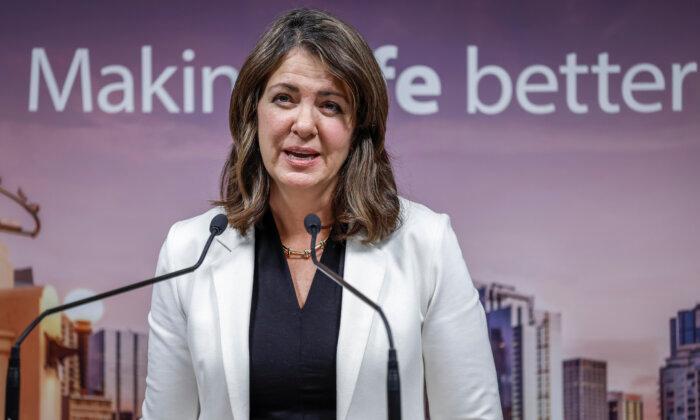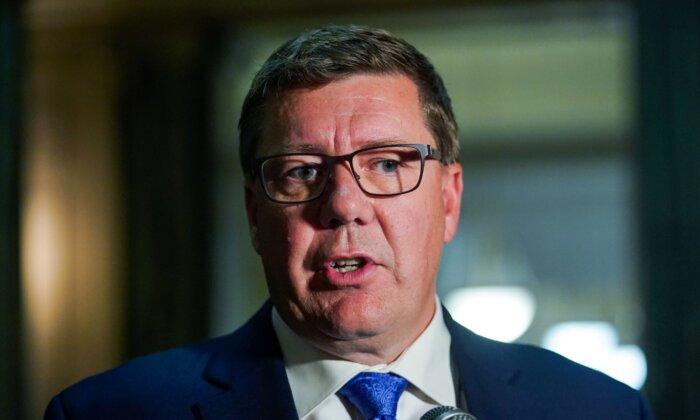On the eve of the release of the 2023 Alberta budget, and roughly three months from the next election, Premier Danielle Smith released on Monday 90-day statistics indicating health care wait times in the province are dropping.
Alberta first launched a new Health Care Action Plan (HCAP) on Nov. 17, 2022, and vowed to dramatically improve EMS response time, reduce surgery wait times, decrease emergency room wait times, and add more health care workers in understaffed areas.
Ambulance Service
The update indicates ambulances are responding faster to emergency calls, despite a sustained 30 percent increase in call volume across the province. From November until the end of January, EMS response times in metro and urban areas went from 21.8 minutes to 17 minutes. These numbers are based on the response times for over 90 percent of activity.In communities with more than 3,000 residents, EMS wait times for urgent calls went from 21.5 minutes down to 19.2 minutes, and for rural communities with fewer than 3,000 residents, ambulance wait times dropped from 36 minutes to 34.9 minutes. Remote communities saw the most improvement, with wait times for an ambulance dropping from 63.9 minutes to 57.5 minutes.
In the last three months, a new ambulance was added in Red Deer, following an additional 19 new ambulances added provincewide last year.
In Edmonton, there was a 92 percent reduction in the number of red alerts, which indicate a lack of ambulance availability, issued in January 2023, compared to January 2022. Calgary recorded a 60 percent reduction in the same time frame.
Red alerts, according to the province, are very short in duration, and only used in the province’s two largest cities. When patients urgently require an ambulance, non-urgent transfers are deferred, single paramedics are used to provide urgent care, or supervisors are deployed to help.
The government attributed some of the improvement in paramedic response times to a new initiative to triage 911 emergency calls.
Surgery Wait Times
The government also reported a reduction in surgical wait times in the province, defined as patients waiting longer than the clinically recommended time, with a decrease of 9.4 percent since November.“It is my hope, and I actually believe, that we will be at zero waiting outside of clinical wait time by March of 2024,” Cowell said.
The province indicated that chartered surgical facilities have opened their doors to 7,000 more publicly funded surgeries (which includes orthopedic and eye surgeries) in January compared with last November. By March 31, it is anticipated that AHS and the chartered surgical facilities will have completed 290,000 surgeries, which is a 4 percent increase of 11,400 surgeries from 278,600 last year.
Emergency Room Wait Times
In January, waiting time to see an emergency room doctor had decreased to 6.4 hours, a reduction of almost 10 percent across the province, compared with the situation in November 2022.The time an admitted patient spends waiting in emergency has been reduced by 5 percent to 40 hours, while the total time spent in the emergency department for discharged patients has remained consistent at 11.8 hours.
“In January, the number of assessed patients waiting in the province’s top 14 hospitals for a continuing care space was 179, lower than the 218 patients in the 2018–2019 fiscal year, and also lower than the 253 patients waiting in November 2022,” said the province.
More Frontline Health Care Workers
Besides more patient beds, AHS added 800 registered nurses, licensed practical nurses, and health care aides in 2022, and has recruited 28 more rural physicians, and 278 more nurses and health care aides to rural Alberta.AHS is recruiting 114 full-time nursing staff to add to emergency departments in the province’s 16 largest hospitals and some suburban hospitals, which the province said will “speed up EMS transfers and free up paramedics to respond to more calls.”
“This will support the target of reducing the time paramedics spend at the hospital to 45 minutes (from 3.2 hours in January) as recommended by the Alberta EMS Provincial Advisory Committee. These new nursing positions are being posted in February,” said the government.
The province is recruiting for an additional 80 full-time paramedic positions, in addition to adding 39 more frontline staff, which include paramedics, frontline supervisors, and communications officers, in the last 90 days.
Overall in 2022, there were 457 new EMS staff added to the roster including 341 paramedics.
Along with that, AHS will move 70 positions that are currently temporary full-time into regular full-time EMS jobs and is in the process of sorting that out through the union.
“Today, the UCP still isn’t even meeting their own targets for surgical capacity,” she said.





